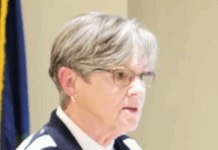LIKE MANY WILDLIFE BIOLOGISTS in my generation, my first wolf sighting was in the late 1990s in Yellowstone National Park. With 23 undergraduate wildlife biology majors in tow, I gazed incredulously as the 18-member Lamar Pack stalked a herd of elk; an amazing sight I never dreamed I would see in my lifetime. As a graduate student in the late-1970s we rarely discussed wolf management; bringing them back didn’t seem feasible. Social acceptance of wolves was light-years away.
I didn’t fully understand the concerns about wolf reintroduction until I found myself decades later staring at several wolf-killed beef carcasses on the Zumwalt Prairie in northeastern Oregon. It was not a pretty sight. The owner who stood next to me sadly murmured, “It’s not about the money – we regularly manage economic loss; but I am tasked with taking care of these animals, and at this I failed.”
The ecological benefits of wolves and other large predators are indisputable; ecosystems with overabundant prey, such as elk, don’t function as well as systems with the full complement of trophic levels. These “complete” ecosystems will likely be more resilient to future impacts from climate change and disrupted fire regimes. In the long-term the ranchers will benefit from these ecosystem services. However, this does not compensate for the grim reality of wolf predation on stock; these losses need to be treated with compassion by society and minimized, preferably with non-lethal methods.
WILDLIFE BIOLOGIST PATRICIA KENNEDY IS A RESEARCHER IN THE EASTERN OREGON AGRICULTURE & NATURAL RESOURCE PROGRAM AND DEPARTMENT OF FISHERIES & WILDLIFE.





Wolf predation on livestock. “These losses should be treated preferably with non-lethal means.” What do you suggest by that statement….to trap or net the wolves and relocate to other areas? Are there other non-lethal means available..sterilization?
In my opinion, HUNTING/TRAPPING is the only proven and financially viable way to keep animal populations in check. Trapping/netting for relocation or sterilizing animal populations cost money and resources that most Federal and State Wildlife Agencies (due to continued budget shortfalls) just don’t have access to anymore. That is why leaving it to the public to hunt/trap these animals in structured hunting seasons is the simple answer to this growing problem.
Therefore, I don’t agree with your position that this issue should be treated with “non-lethal” means when it is obvious that “lethal” means is necessary and the public can be a major component to this process with little effort or cost to State or Federal Wildlife Agencies.